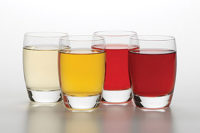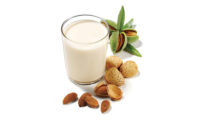To hear Bill Driessen tell it, the level of ambient health awareness these days is unprecedented.
“Today’s shoppers are more informed about health and wellness than they’ve ever been,” said Driessen, the director of technical sales for Taiyo International, a Minneapolis-based supplier of functional ingredients, emulsifiers, stabilizers and tea-based ingredients.
The reason is simple: connectivity.
“In this era when anyone with a smartphone, tablet or computer can find product reviews and comments with a few simple keystrokes, it’s much easier to check what a company’s website says about its products’ functional benefits and then go see what other consumers and health professionals think,” he said.
So it makes sense that consumers are demanding more from their functional foods and beverages. No longer satisfied with garden-variety fortification, consumers seek products that target defined health conditions using ingredients with scientifically substantiated benefits.
A 2013 Experian/Packaged Facts survey found that more than half of consumers polled purchased functional foods or beverages formulated to address specific conditions. The percentage rose to 62% among “very health conscious” consumers.
The onus is now on product developers to figure out what are consumers’ most-compelling health concerns and then design products that speak to them. It is a world ripe with opportunity.
The original functional foods
The notion that functional dairy would have a place in healthy diets is hardly news.
“Fresh and fermented dairy products have been considered excellent functional foods since ancient times,” noted Mirjana Curic-Bawden, a senior scientist at Chr. Hansen, Milwaukee, who works with cultures and enzymes.
“The dairy segment innately carries a health halo thanks to its protein, vitamins and mineral content,” said Jennifer Stephens, director of marketing at Fiberstar Inc., River Falls, Wis.
She said not only do dairy favorites appeal to “the vitality segment” of baby boomers unwilling to slow down as they age, but also they are a “staple within kids’ nutrition, known to support bone health, energy maintenance and overall wellbeing in children.”
In today’s functional-ingredient industry, there are more options for formulators to choose to increase mineral, fiber or vitamin content without negatively affecting flavor, stability or texture in the final product, Driessen noted.
Protein and recovery
Ivan Gonzales, the dairy marketing manager at Ingredion Inc., Westchester, Ill., pointed out that when it comes to dairy products, it “certainly makes it easier for consumers to accept nutritional or condition-specific claims on a product they’re familiar with.”
And which condition-specific claims are they most eager to accept? For one, high protein. That appeals to athletes and sports enthusiasts.
“The rising popularity of the sports-performance category, combined with consumers’ increasing awareness of protein’s effects on muscle growth, increases the opportunity to target shoppers through dairy-based products,” said Vicky Fligel, business development manager for Glanbia Nutritionals, Fitchburg, Wis.
Marketers have already caught on, and the selection of protein-rich yogurt, smoothies and dairy-based beverages is seeing “exciting” functional developments, she said. The days of protein ingredients with off-flavors, instability in solution and troublesome organoleptics are gone.
“Today’s advanced proteins allow for lighter and more palatable textures in medium- to high-protein applications,” Fligel said.
In the sports-nutrition segment, protein is not the only functional option that dairy developers should explore. Beneo Inc. President and General Manager Joseph O’Neill noted that endurance athletes need easy-to-tolerate sources of sustained energy. The Morris Plains, N.J.-based company makes isomaltulose, a low-glycemic carbohydrate providing balanced and prolonged energy.
Then there are the B vitamins, said Rachel Murphy, a scientific leader at DSM Nutritional Products, Parsippany, N.J. She noted that they are essential coenzymes in energy metabolism and production. Murphy also recommended including electrolytes for hydration in sports-beverage formulations. She explained that even the long-chain omega-3 fatty acids DHA (docosahexaenoic acid) and EPA (eicosapentaenoic acid) bring sports-performance benefits, particularly in recovery products. These ingredients “help reduce the normal inflammatory response and muscle damage that occur following exercise in athletes and non-athletes,” Murphy said.
Beyond the basics of energy and recovery, athletes might appreciate a sports beverage that helps sharpen their mental focus. To that end, Driessen suggested the amino acid L-theanine for “improving performance during a game when fast reaction, decision making and accuracy are important.” The ingredient increases alertness without generating jitters, providing “a non-drowsy, relaxed effect.”
Fiber manages weight gain
While athletes generate the buzz, there are a greater number of couch potatoes who are trying to shed a few pounds.
“Dairy has been linked to weight management and satiety,” said Fligel. With some savvy formulation, that link can become a scientifically supported bond.
Formulators pursuing a weight-management angle for their products need to consider fiber. Americans consume less than they need.
T. P. Rao, the assistant general manager at Taiyo’s division in Yokkaichi, Japan, explained that fiber increases gastric transit time, slowing the emptying of the stomach after a meal, while also increasing levels of satiety-inducing hormones like cholecystokinin (CCK).
He and colleagues published a study showing that consuming a breakfast of yogurt plus the company’s medium-chain galactomannan fiber produced “perceivable satiation effects lasting more than four hours.” The ingredient, which is concentrated to more than 85% dietary fiber, also effectively reduced caloric intake throughout the day. Levels as low as 2 to 5 grams per serving were enough to generate “sustained and acute perceivable satiety effects, respectively,” he said.
Käti Ledbetter, a product development scientist for ADM, Decatur, Ill., pointed to recent studies confirming the satiety-promoting value of her company’s line of soluble corn fiber ingredients. In addition to their satiety effects, they contribute only a fraction of sugar’s gram-per-gram energy to a product’s nutritionals — 1.6 kcal/gram to sugar’s 4 kcal/gram, in the case of the line’s 90% concentrated form. The ingredients can be partial substitutes for sugar and help developers create products that hit fiber targets while meeting trends in overall sugar and calorie reduction, she said.
For a “good” or “excellent” source of fiber claim to be made, a product must contain a respective 10% (2.5 grams) or 20% (5 grams) of the RDA for fiber per serving (while also meeting other nutritional criteria spelled out in the claim guidelines). ADM’s ingredients appear on labels as soluble corn fiber, helping formulators to create a product with the clean label that consumers are looking for.
Driessen frames weight management and satiety as two sides of the same coin.
“Many times we see weight-management products that offer thermogenic or fat-burning properties but that might not do anything to curb appetite,” he noted.
On the other hand, products that purport to curb appetite might do so in a way that makes consumers feel gassy, bloated and generally uncomfortable.
“Using ingredients that help safely burn calories while comfortably reducing hunger cravings at the same time seems a better route,” he said.
For example, he suggested that a combination of green-tea catechins and partially hydrolyzed guar gum (a soluble dietary fiber) “offers satiety without causing the excessive gas and bloating common to some other dietary fiber sources.”
Active cultures, probiotics
Digestive-health claims are attracting attention, especially in dairy foods that have housed good-for-you bacteria for centuries and are now adding documented probiotics on top.
However, as Curic-Bawden noted, “It’s important to emphasize that yogurt cultures are live and active lactic-acid bacteria, but they’re not considered probiotics.”
As a rule, probiotics like Bifidobacterium BB-12 or Lactobacillus casei 431 “have solid documentation supporting the re-establishment or maintenance or balance of the gastrointestinal tract and/or a positive effect on immunity,” she said.
So while yogurt cultures do great things for yogurt, consumers need probiotics to do great things for their guts. The general public is clueing in to this distinction.
Michael Bush, senior vice president of Ganeden Biotech, Mayfield Heights, Ohio, estimated 80% of consumers know what probiotics are and associate them with a health benefit. While digestion tops those benefits, improved immune function follows closely. Beyond immunity, research is uncovering roles for probiotics in protein utilization, recovery, cardiac health and oral health. Longer-term studies are looking at autism, kidney disease and obesity, Bush said.
Not all probiotics perform equally and the effective doses vary. “It is very important to keep in mind that the science behind each claim is specific to the individual strain studied,” he emphasized.
After probiotics, “the next logical ingredient” for digestive-health formulation is prebiotic fiber, said Alison Raban, a certified food scientist with BI Nutraceuticals, Long Beach, Calif.
“Fibers can really elevate a digestive-health product, especially in dairy, because so many dairy products contain live, active cultures,” she said. Not only does prebiotic fiber “feed” these cultures, but also fiber is synonymous with regularity in its own right.
Raban recommended working with ingredients like psyllium fiber, fruit and vegetable fibers and trendy ingredients like chia seeds and quinoa. She calls these last two “great ingredients to incorporate into dairy products” because of their omega-3 fatty acids and protein, respectively.
Added fiber must be easy for consumers to tolerate, said Courtney Kingery, a senior product manager at Tate & Lyle, a supplier of soluble corn fiber based in Hoffman Estates, Ill. She said corn fiber is effective at boosting fiber levels without sacrificing digestive tolerance. Clinical trials that assessed doses of 12 to 27 grams a day revealed good tolerance over 10 days to three weeks.
Fiber “may even assist with weight control by providing minimal calories while also replacing higher-calorie ingredients,” Kingery said.
Consider the demographics
The formulation friendliness of these ingredients takes a lot of weight off the dairy processor’s shoulders. With so many applications amenable to so many functional inputs, the toughest decision may be which application to develop and for what consumer niche.
“The dairy applications that are most suitable for added nutrition are those that are already positioned as delivering nutrition,” said Todd Sitkowski, senior marketing manager for dairy at DSM. That includes fluid milks, yogurt-based items, dairy-based beverages and even some packaged cheese products, like string and cheese sticks.
However, the specific product category isn’t the only consideration. The target demographic, as well as where the product will be distributed, also factor into which health benefits to consider for positioning with the particular product, he advised.
Millennials are quite different from baby boomers. Another important consideration is the consumer’s level of health involvement. As Fiberstar’s Stephens pointed out, “Proactive consumers are highly engaged and purchase foods to improve specific health objectives.”
The less-engaged consumer presents “an opportunity for savvy food marketers to use packaging as a means to educate this segment and increase their health-and-wellness engagement,” Stephens said.
Raban, the food scientist with BI Nutraceuticals, echoed her thoughts, underscoring the role of education.
As informed as consumers may be, “They still need to be more informed on some topics beyond the basics,” she said. “This learning curve is an opportunity for manufacturers to educate consumers not only about health and wellness, but also about the benefits of their product. It’s a chance to get that product in front of their faces in a valuable way. Take advantage of this.”





